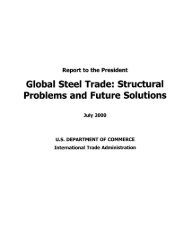Vietnam Environmental Technologies Export Market Plan
Vietnam Environmental Technologies Export Market Plan
Vietnam Environmental Technologies Export Market Plan
Create successful ePaper yourself
Turn your PDF publications into a flip-book with our unique Google optimized e-Paper software.
Deforestation continues, however. Slash-and-burn<br />
agriculture is still practiced in many areas, with harvesting<br />
cycles too short for forests to be replenished. Land<br />
designated for protection is still used by rural farmers<br />
for grazing livestock. State-owned forestry enterprises<br />
have been allowed to continue operations, because<br />
officials are concerned about increasing unemployment<br />
in the already poor rural areas.<br />
The government has initiated several action plans to<br />
try to readdress the problem. The 10th National Assembly<br />
approved an forestation plan covering 5 million hectares.<br />
Two million hectares will be protected forest, and 3<br />
million hectares will be used for industrial purposes. The<br />
government’s goal is to have 14.3 million hectares of total<br />
forest area by 2010, an increase from the current 9.3<br />
million. Total funding needed for the project is estimated<br />
at $2.5 billion.<br />
There are concerns that this plan will be as unsuccessful<br />
as the plans implemented earlier in the decade, such<br />
as the “Greening the Barren Hills” plan of 1992.<br />
According to the World Bank, this plan failed because<br />
the day-to-day concerns of local populations were not<br />
considered. Incentives to protect or manage the resources<br />
in a sustainable manner did not outweigh the immediate<br />
need for income, shelter, and fuel. As a result, natural<br />
forests areas have continued to decline.<br />
Liberating <strong>Vietnam</strong>’s agricultural sector and dismantling<br />
its rural cooperatives have led to tremendous growth<br />
in farming. Since beginning its renovation process in<br />
1986, <strong>Vietnam</strong> has moved from a net importer of rice to<br />
the world’s third largest exporter. Regions that once only<br />
grew one crop of rice a year now can harvest two or three<br />
crops. This productivity growth has been accomplished<br />
through the use (and overuse) of fertilizers and pesticides<br />
(Table 11.2).<br />
Anecdotal evidence from farmers in the Mekong Delta<br />
point to declining fish stocks due to the overuse of<br />
pesticides. The Ministry of Agriculture has conducted<br />
surveys of farming families in the north, south, and<br />
central regions of the country. Use of pesticides in all of<br />
Table 11.2 Pesticide Use in <strong>Vietnam</strong>, 1980–1999<br />
(tons per year)<br />
Year<br />
Volume<br />
these regions has increased by 80 percent to 90 percent<br />
since 1986.<br />
Studies conducted in the Mekong delta and in the Red<br />
River delta show that pesticide levels in the water, soil,<br />
air, and produce, are higher than standards set by the<br />
National <strong>Environmental</strong> Agency. In a survey of vegetable<br />
growing areas in Khanh Hoa province on the south central<br />
coast, 25 percent of the vegetables sampled had pesticide<br />
levels 2 to 6 times higher than standards. Thirty-nine<br />
percent of 423 soil samples taken showed levels 2 to 40<br />
times higher than standards.<br />
11.2—<strong>Market</strong> Opportunities and<br />
Competitive Situation<br />
The forestry sector has received a substantial portion<br />
of overseas development assistance (ODA) commitments<br />
over the past five years. Many of the largest projects in<br />
the sector were developed in the mid-1990s, with<br />
implementation in 1997 and 1998. Table 11.3 shows some<br />
of the largest forestry ODA projects to date.<br />
While attention is still focused on improved management<br />
of <strong>Vietnam</strong>’s natural resources, ODA and government<br />
funding trends are moving away from forestry<br />
toward urban pollution problems (water supply, drainage/<br />
sewerage, wastewater treatment, etc.).<br />
Coastal Wetlands Protection<br />
A $65.6 million coastal wetlands protection and<br />
development project is expected to help restore the<br />
Mekong delta’s depleted coastal mangrove swamps. The<br />
six-year project will develop sustainable resource use in<br />
six provinces, including Ca Mau, Bac Lieu, Soc Trang,<br />
and Tra Vinh provinces. About 60 percent of the<br />
mangrove coverage in these provinces have been lost<br />
since 1984 because of logging and uncontrolled shrimpfarm<br />
development. Project financing will come from a<br />
$31.8 million loan from the World Bank, $11.3 million<br />
loan from Danish International Development Assistance<br />
(DANIDA), and $22.5 million loan from the <strong>Vietnam</strong>ese<br />
government. The project is scheduled to be carried out<br />
between 2000 and 2006.<br />
1984 10,000<br />
1992 21,400<br />
1995 30,000<br />
1999 130,000<br />
Source: Ministry of Agriculture and Rural Development.<br />
42 U.S. Department of Commerce, International Trade Administration
















